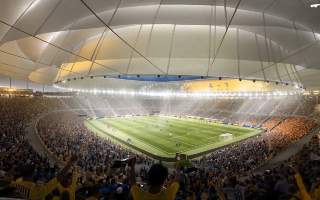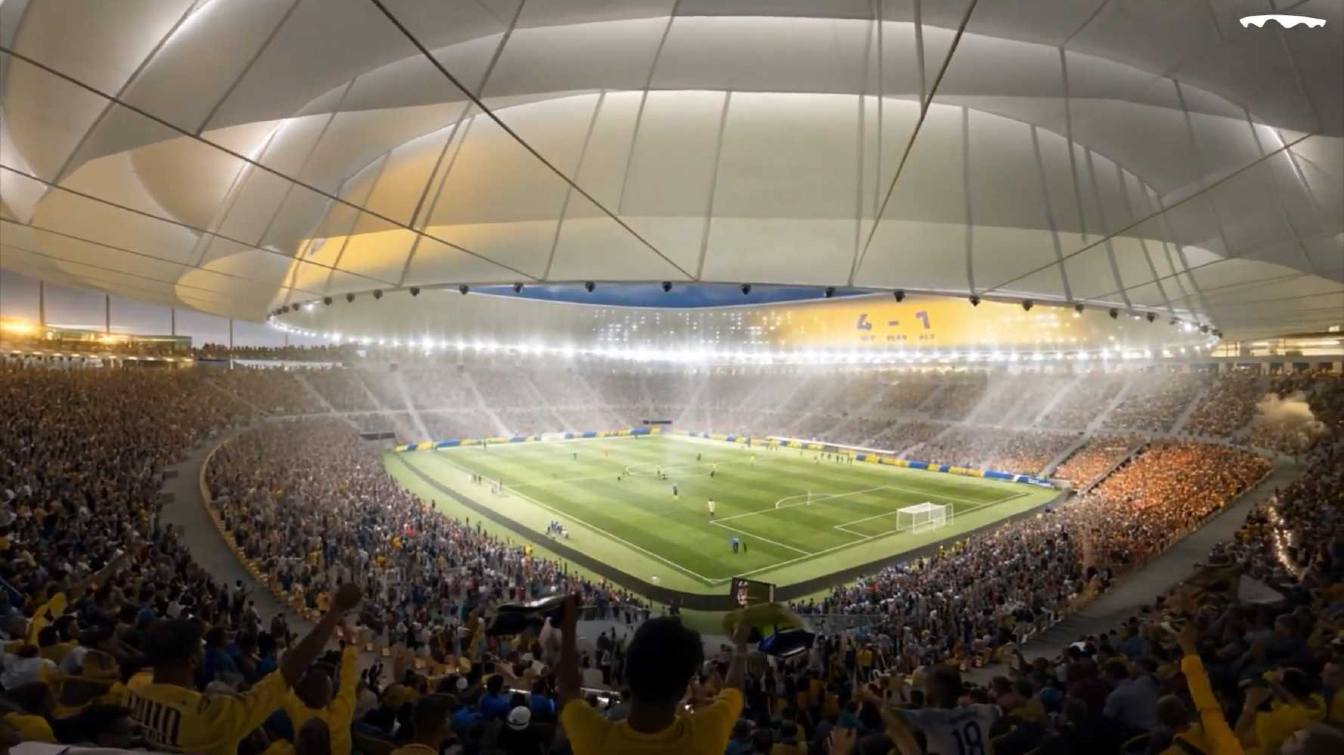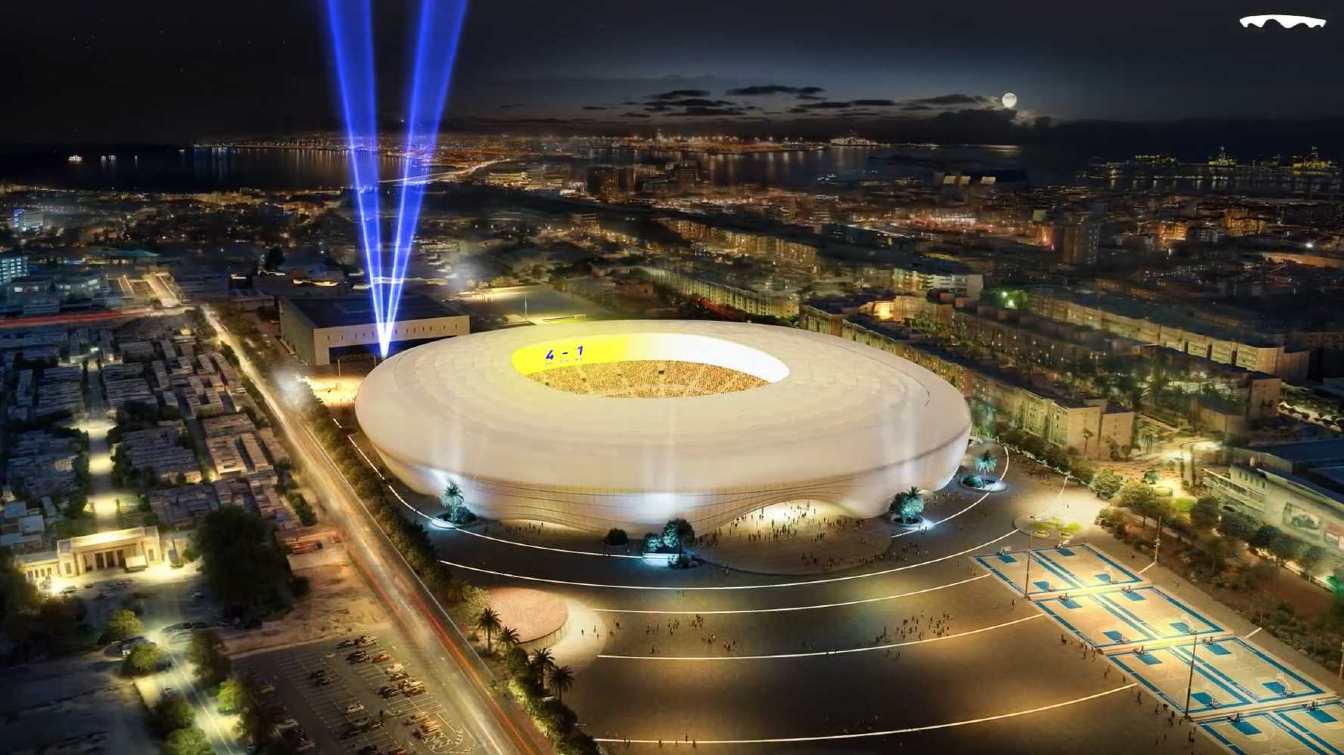Spain: UD Las Palmas may leave Estadio Gran Canaria during World Cup works
source: StadiumDB.com; author: Jakub Ducki
 Preparations for the FIFA World Cup 2030 will force the modernization of Gran Canaria Stadium. As a result, the yellow-and-blues may be forced to play at another venue, and the island’s authorities are considering several contingency scenarios.
Preparations for the FIFA World Cup 2030 will force the modernization of Gran Canaria Stadium. As a result, the yellow-and-blues may be forced to play at another venue, and the island’s authorities are considering several contingency scenarios.
Advertisement
Risk of UD Las Palmas moving
The modernization of Estadio Gran Canaria, aimed at adapting the venue to FIFA requirements ahead of the 2030 World Cup, is becoming increasingly tangible. A contract has already been signed for works that will begin between November and December with the demolition of the eastern building and one of the characteristic towers.
The €804,000 contract was awarded to Hercal Diggers, which is expected to complete the work within 16 weeks. The demolition will be carried out using specialized machinery to ensure safety and prepare the site for the next stages of modernization. According to the plan, the entire renovation will be completed in October 2029, just a few months before the World Cup. The biggest challenge of the project will be the construction of the new roof, scheduled for the 2028/29 season.
As Aridany Romero, Sports Councillor of the Cabildo de Gran Canaria, admitted in an interview with Onda Cero Canarias, there is a possibility that UD Las Palmas will not be able to play at their own stadium during the roof-lifting works. It is possible that when the time comes to raise the roof, Unión Deportiva will have to move to another stadium or divide the venue into sectors,
he stated.
Romero stressed that there is no other venue on the island that meets LaLiga’s requirements, namely a minimum capacity of 8,000 seats. For this reason, two paths are being considered: temporarily closing off sections of stands at Gran Canaria or moving matches to another stadium.
One potential solution is Estadio Heliodoro Rodríguez López in Tenerife, the home ground of UD’s biggest rival, CD Tenerife. An alternative could be the municipal stadium San Fernando in Maspalomas, though it would require a major redevelopment to meet league requirements. We are talking about the 28/29 season and only if the roof is lifted,
added the councillor.
 © L35 Arquitectos | Design of Gran Canaria Estadio (La Nube)
© L35 Arquitectos | Design of Gran Canaria Estadio (La Nube)
Cabildo’s plan: four away matches
The island’s authorities, however, are trying to minimize the risk of relocation. Instead of a long-term move, the option of playing the last two matchdays of the 2027/28 season and the first two of the 2028/29 season away from home is being considered. This would provide a four-month buffer period, during which the most invasive works on the roof could be carried out without harming UD Las Palmas.
Romero explained in an interview with SER Las Palmas that the move to San Fernando is treated solely as a contingency plan. The investment commitment of the Cabildo de Gran Canaria has already authorized the municipality of San Bartolomé de Tirajana to invest €4 million in transforming the stadium, although essentially such a scenario should not take place,
he emphasized.
 © L35 Arquitectos | Design of Gran Canaria Estadio (La Nube)
© L35 Arquitectos | Design of Gran Canaria Estadio (La Nube)
Stages of redevelopment and impact on fans
The first major works will concern the eastern stand (Naciente), which has only 1,000 seats. Together with the Ultra Naciente group, solutions are already being sought regarding the relocation of fans. However, Romero stressed that the real difficulties will come only during the installation of the new roof. Difficult times are coming and fans must be aware of this: it happened at Bernabéu, at Son Moix, at Camp Nou, and at Reale Arena,
he reminded.
Estadio Gran Canaria will be expanded from 32,392 to 44,484 seats, thereby exceeding FIFA’s required minimum of 40,000. The venue will receive fully covered stands and will be transformed into a typical football stadium, with the audience closer to the pitch, especially on the Naciente and Curva stands.
The project was prepared by the studio L35 Arquitectos, responsible, among other things, for the modernization of Santiago Bernabéu in Madrid. According to the schedule, all works are to be completed by June 2029.
Advertisement
 StadiumDB
StadiumDB